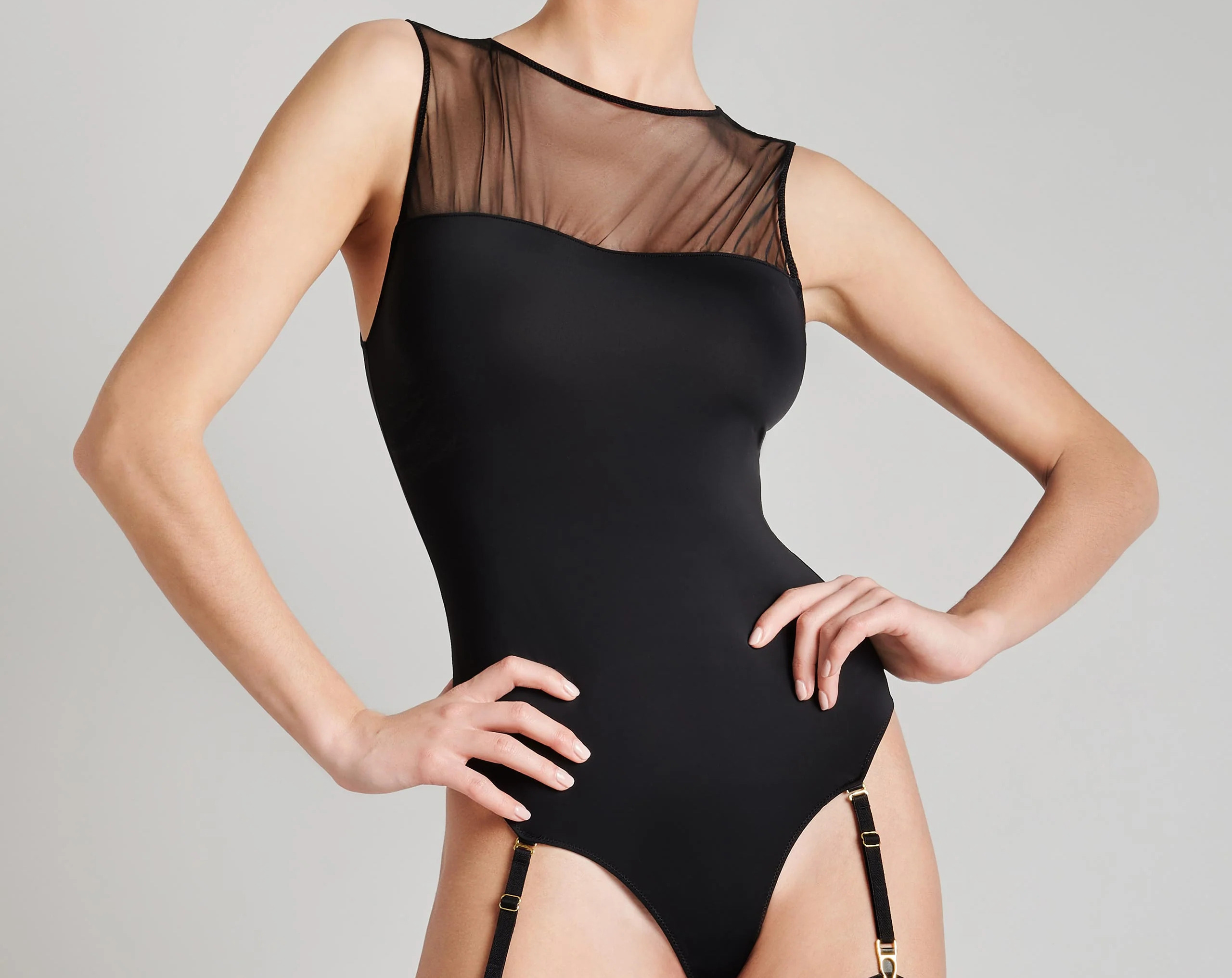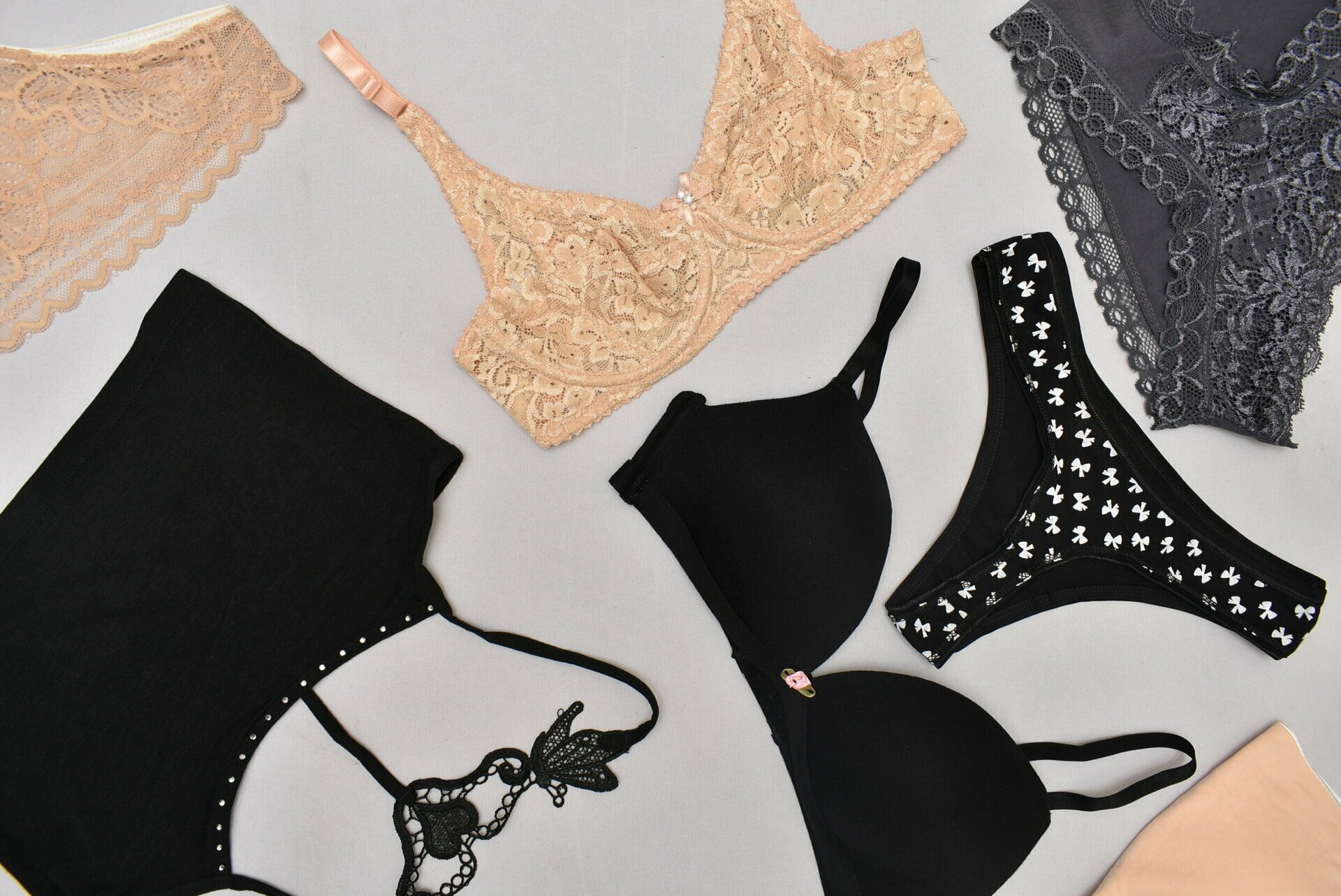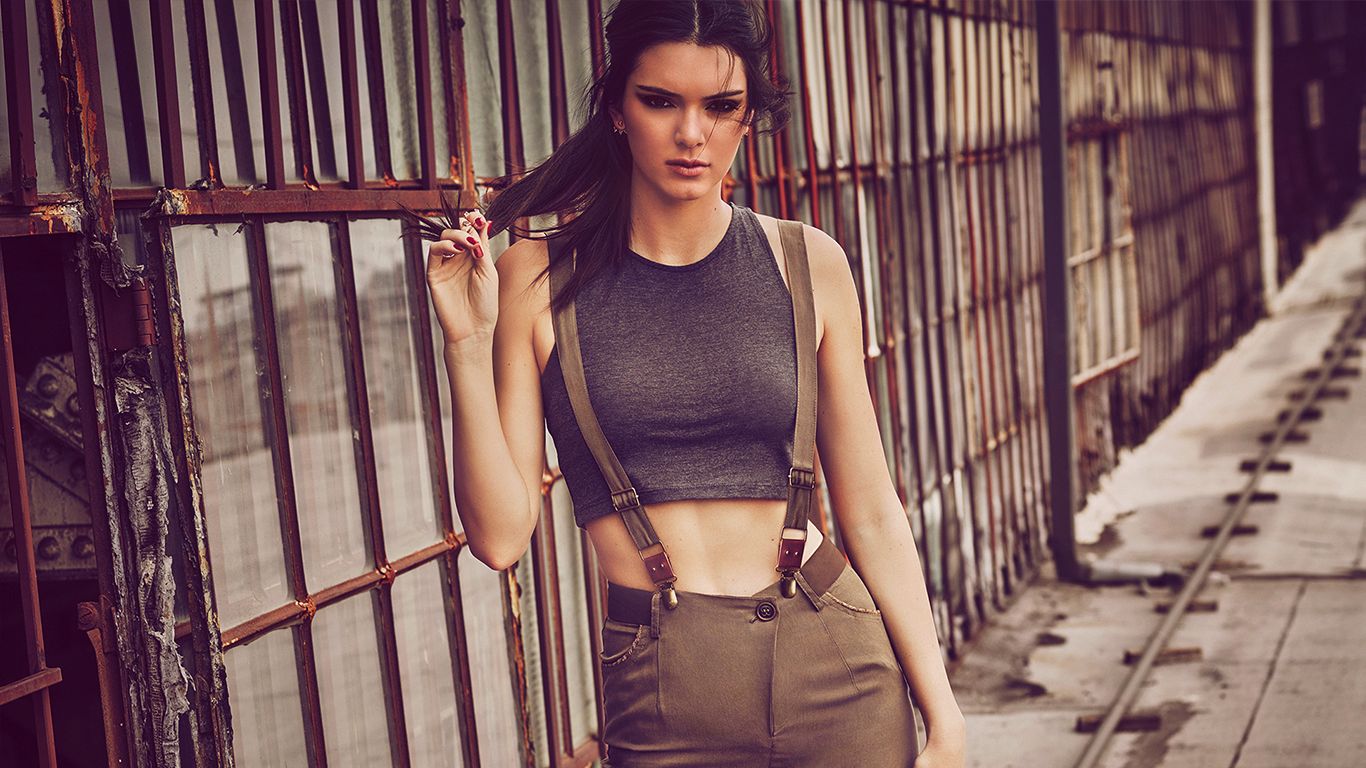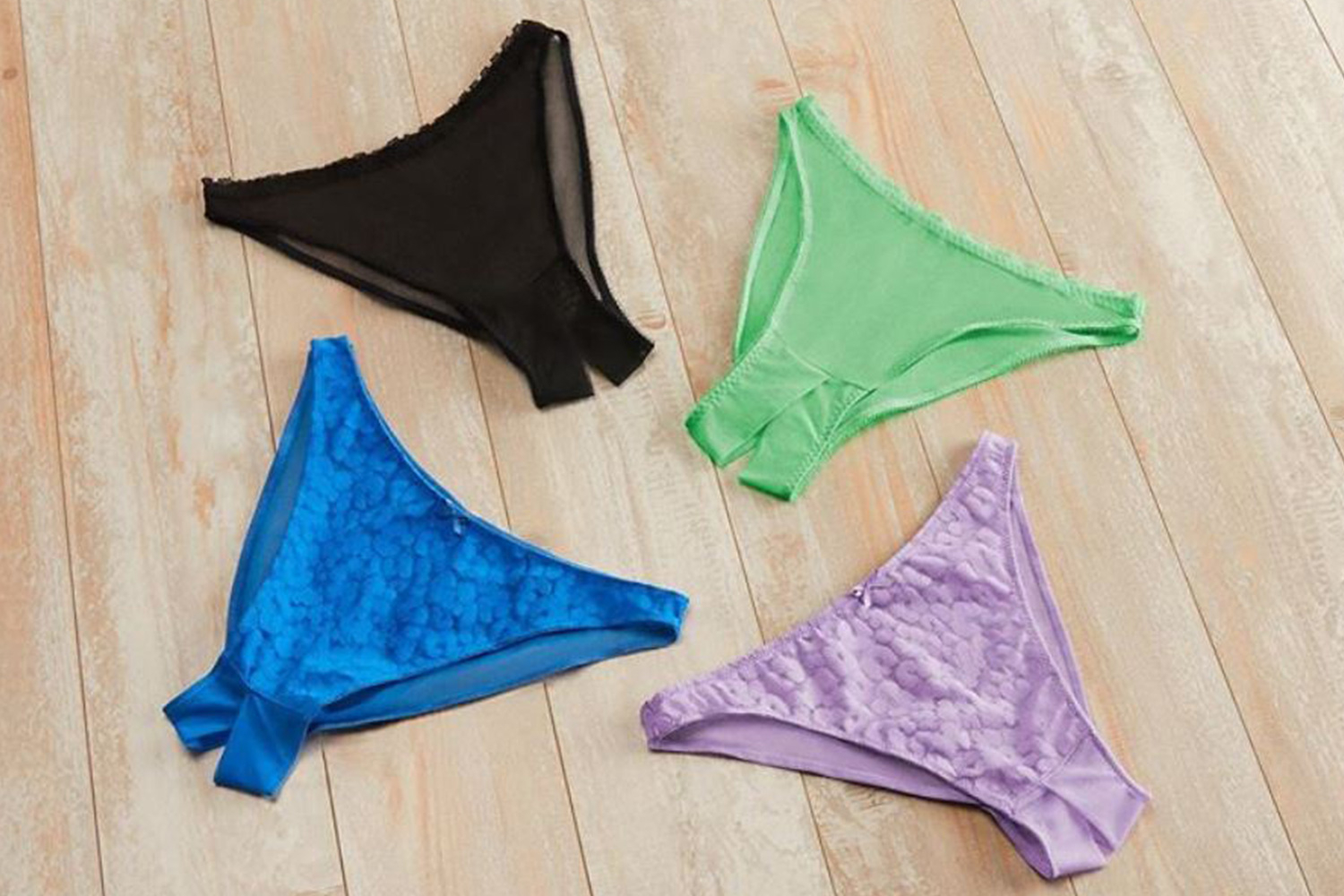Home>Women's Underwear>Bikinis>Why Do Women Wear Bikini
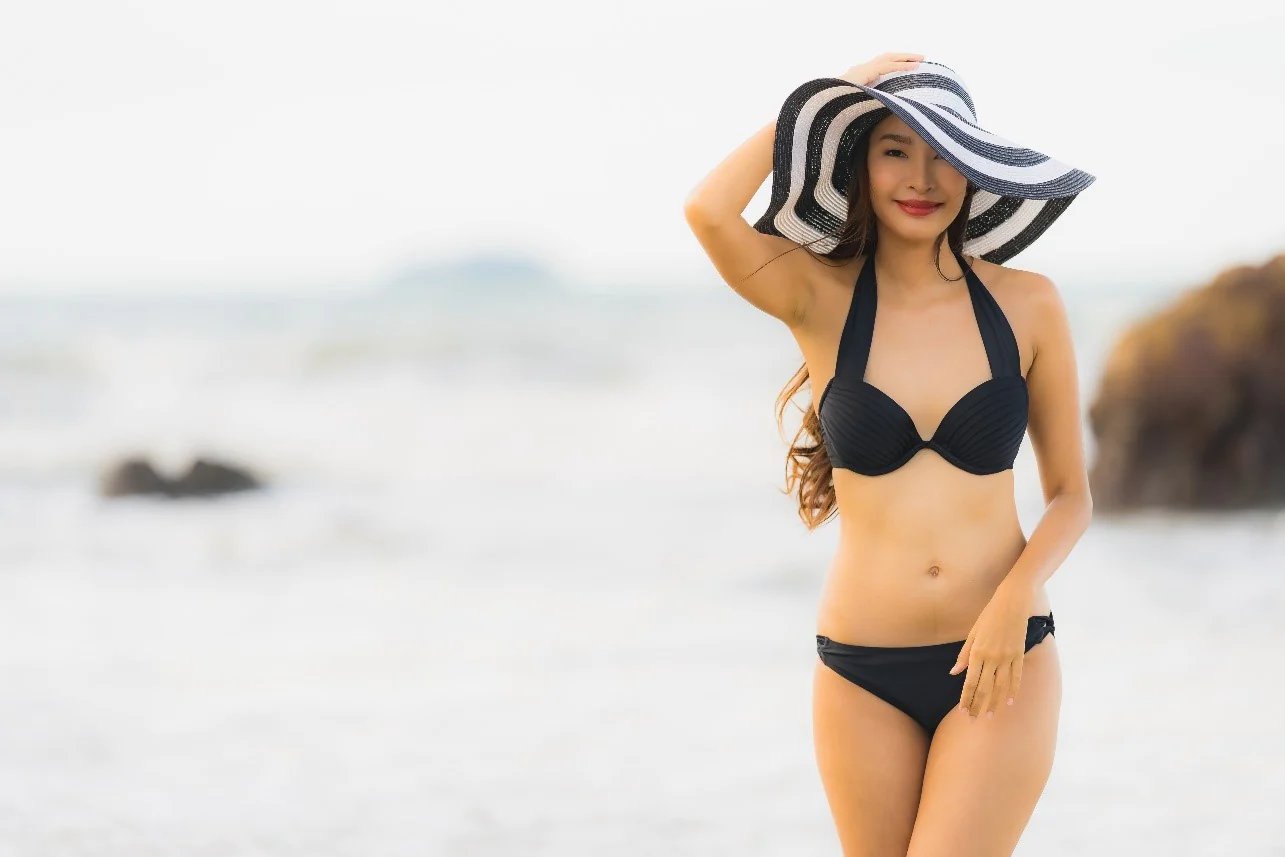

Bikinis
Why Do Women Wear Bikini
Published: July 31, 2023
Discover the reasons why women choose to wear bikinis and embrace their confidence. Explore the versatility and fashion trends of bikinis in various styles and designs.
(Many of the links in this article redirect to a specific reviewed product. Your purchase of these products through affiliate links helps to generate commission for Under-tec.com, at no extra cost. Learn more)
Table of Contents
Introduction
When it comes to fashion choices, one garment that has continued to be a source of fascination and controversy is the bikini. From sandy beaches to glamorous pool parties, bikinis have become an iconic symbol of summer, leisure, and body confidence. But have you ever wondered why women wear bikinis?
For centuries, swimwear has evolved and adapted to cultural, societal, and fashion trends. The bikini, specifically, has undergone various transformations since its debut in the late 1940s. Today, it is an essential part of women’s swimwear collections, embraced by women of all shapes and sizes.
Underneath the glamorous appeal, there are numerous reasons why women choose to wear bikinis. Whether it’s for fashion and style, body empowerment, cultural and social factors, or personal choice and freedom, the motivations behind wearing a bikini are as diverse as the women themselves.
This article will explore the various reasons why women choose to don bikinis, shedding light on the historical, cultural, and societal factors that influence their decision. By understanding these influences, we can gain a deeper appreciation for the significance of the bikini in women’s lives.
Historical Context
To understand the significance of bikini-wearing today, it’s crucial to delve into its historical roots. The bikini made its debut in 1946, introduced by French designer Louis Réard. At the time, it was a bold departure from the more modest, one-piece swimsuits that were prevalent. Inspired by the daring nature of the garment, Réard named it after the Bikini Atoll, the site of nuclear testing in the Pacific.
However, the acceptance of the bikini did not come easily. In the early years, it faced widespread criticism and even legal restrictions in some countries. The revealing nature of the bikini was seen as scandalous and defiant of societal norms. Yet, over time, attitudes began to shift, and the bikini gained popularity, aided by the rise of women’s liberation movements in the 1960s and 1970s.
Throughout the decades, the bikini has cemented its place in fashion history, evolving to reflect changing aesthetics. From the high-waisted, modest designs of the 1950s to the daring Brazilian and string bikinis of the 1990s, the bikini has consistently pushed boundaries and challenged conventions.
Today, we see a wide range of bikini styles, catering to different body types and personal preferences. This evolution is a testament to the changing cultural attitudes towards women’s bodies and self-expression. The bikini has become a symbol of liberation and body positivity, allowing women to embrace and celebrate their individuality.
Looking back through history, the bikini has undergone a remarkable transformation, transcending its initial controversial status to become an essential part of beach and resort fashion. Its journey reflects society’s changing attitudes towards women’s bodies, empowerment, and freedom of choice.
Fashion and Style
The bikini is not just a piece of swimwear; it is also a fashion statement. Women choose bikinis for their stylish and fashionable designs that allow them to express their personal style. From vibrant colors and patterns to unique cuts and embellishments, bikinis offer an array of options that cater to different tastes and preferences.
The fashion industry plays a significant role in shaping trends and promoting new bikini designs. Fashion designers constantly innovate and experiment with bikini styles, presenting them on runways and in magazines. As a result, women have access to a wide range of choices, allowing them to find bikinis that suit their body shape, personality, and sense of style.
Bikinis can be worn not only at the beach or pool but also as part of resort wear and summer outfits. They can be paired with cover-ups, sarongs, or denim shorts, creating versatile and fashionable ensembles. This fashion flexibility has further contributed to the popularity of bikinis, making them a go-to choice for women who want to look chic and summery.
Moreover, bikinis have become a canvas for creativity and artistic expression. Many bikini designers collaborate with artists and incorporate unique prints, illustrations, or hand-painted designs into their collections. This allows women to wear bikinis that showcase individuality and support the work of talented artists.
Another aspect of fashion and style is the association of certain bikini styles with specific eras or trends. Vintage-inspired bikinis, for example, harken back to the glamour and elegance of the 1950s and 1960s. Retro-inspired high-waisted bottoms and polka dot prints offer a nostalgic nod to the past, appealing to those who appreciate classic aesthetics.
Ultimately, the fashion and style aspect of bikini-wearing allows women to express themselves, feel confident, and embrace their unique fashion sensibilities. The wide array of designs and options available make the bikini an integral part of the fashion world, enabling women to make a statement while enjoying fun in the sun.
Body Empowerment
One of the significant reasons why women choose to wear bikinis is the sense of body empowerment it can provide. Bikinis encourage women to embrace and celebrate their bodies, regardless of shape, size, or perceived flaws. By wearing a bikini, women defy societal expectations and standards of beauty, reclaiming ownership over their bodies and promoting body positivity.
Wearing a bikini allows women to showcase their bodies confidently, highlighting their unique features and celebrating their curves. It encourages self-acceptance and promotes a positive body image, challenging the notion that only certain body types are considered beautiful or acceptable.
Moreover, the bikini has played a vital role in the body positivity movement, which aims to dismantle harmful beauty ideals and promote inclusivity. By wearing bikinis, women can inspire others to embrace their bodies and reject body shaming. It sends a powerful message that all bodies are beautiful and deserving of love and acceptance.
Another aspect of body empowerment is the feeling of liberation that comes with wearing less clothing. Bikinis provide a sense of freedom and comfort, allowing women to move and enjoy activities without restrictions. This freedom of movement enhances the overall experience of being in the water, participating in sports, or simply lounging by the pool.
Add another sentence here.
In summary, wearing a bikini can be an empowering choice for women, as it challenges societal beauty standards, promotes body positivity, and allows for a sense of freedom and self-expression. By embracing the bikini, women celebrate their bodies and encourage others to do the same.
Cultural and Social Factors
The decision to wear a bikini is often influenced by cultural and social factors. Different cultures and societies have varying attitudes towards swimwear, modesty, and body exposure, which can shape women’s choices when it comes to wearing bikinis.
In some cultures, wearing a bikini may be considered the norm, and women feel comfortable and confident in this attire. It is seen as a symbol of leisure, freedom, and enjoyment of the outdoors. On the other hand, in more conservative societies, wearing a bikini might be viewed as immodest or inappropriate. Women in these contexts may opt for more conservative swimwear options, adhering to cultural and societal expectations.
Social factors can also influence women’s decisions to wear bikinis. Peer pressure, societal norms, and social media influence can all play a role in shaping women’s choices. For example, seeing friends, celebrities, or influencers confidently rocking bikinis on social media platforms can inspire women to follow suit and embrace the trend.
Fashion trends and media representations also impact this decision. When bikini styles are popularized in fashion magazines, advertisements, and movies, women may be more inclined to try them out and embrace the fashionable trend. Media representation can help normalize the wearing of bikinis, making women feel more comfortable and accepted in their choice of swimwear.
Furthermore, cultural and social factors can intertwine with body image. In some cultures, body exposure is associated with confidence and attractiveness, while in others, modesty and covering up are considered more desirable. Women’s perceptions of their own bodies, influenced by cultural ideals of beauty and societal pressure, can impact their decision to wear a bikini.
Overall, cultural and social factors shape how women perceive and choose to wear bikinis. Cultural norms, social expectations, peer influence, and media representations all play a role in this decision-making process, highlighting the importance of considering these factors when exploring the motivations behind bikini-wearing.
Societal Expectations
Societal expectations often influence women’s decisions when it comes to wearing bikinis. Throughout history, there have been societal norms and standards that dictate how women should dress and present themselves. These expectations can vary across different cultures, communities, and generations.
In some societies, there is an expectation that women should adhere to a certain level of modesty when it comes to swimwear. This may mean opting for more conservative styles, such as one-piece swimsuits or tankinis, to cover up more of the body. Women may feel pressure to conform to these expectations in order to avoid judgment, criticism, or unwanted attention.
On the other hand, in societies that value body confidence and self-expression, there may be more acceptance and encouragement for women to wear bikinis. These societies may embrace the idea that women have the right to show off their bodies and express their personal style through their choice of swimwear.
There are also societal expectations surrounding body size and shape. Some cultures place a higher value on certain body types, leading to body shaming and unrealistic beauty standards. These societal pressures can affect women’s confidence and influence their choices when it comes to wearing bikinis. Women might feel the need to conform to a specific body ideal or hide their perceived imperfections.
However, societal expectations are not fixed and can evolve over time. The body positivity movement and increased representation of diverse body types in the media have challenged traditional beauty standards and encouraged greater acceptance of different body shapes and sizes. This societal shift has brought about increased inclusivity in the fashion industry, including swimwear, and has empowered women to embrace their bodies and wear bikinis with confidence.
It is important to recognize the influence of societal expectations on women’s decisions to wear bikinis. By understanding and challenging these expectations, society can create a more inclusive and accepting environment where women feel empowered to make their own choices based on their comfort, style preferences, and self-expression.
Media Influence
The media plays a significant role in shaping societal norms, including perceptions of beauty, body image, and fashion. When it comes to wearing bikinis, media representation and influence can have a profound impact on women’s choices and self-perception.
One way in which the media influences the decision to wear bikinis is through idealized and often unrealistic portrayals of women’s bodies. Magazines, advertisements, and social media platforms often feature airbrushed and digitally manipulated images that promote a narrow and unattainable beauty standard. These images can lead to feelings of inadequacy and insecurity among women, creating pressure to achieve a “perfect” bikini body.
However, there has been a gradual shift in recent years, with the rise of body positivity movements and a push for more inclusive representation in the media. There is now a greater emphasis on showcasing diverse body types, sizes, and shapes in swimwear campaigns. This shift has helped to challenge traditional beauty standards and promote acceptance of different bodies, allowing women to feel more empowered to wear bikinis without fear of judgment or scrutiny.
Celebrities and influencers also play a significant role in shaping bikini trends and influencing women’s fashion choices. The media often glorifies and scrutinizes the bodies of these individuals, making their style choices and bikini photos highly influential. When celebrities confidently don bikinis and share their experiences on social media, it can have a ripple effect, inspiring women to feel more comfortable and empowered in their own bikini-wearing journeys.
Furthermore, the media influences fashion trends, including swimwear. Bikini styles and designs that are showcased in magazines, runways, and popular TV shows can quickly become sought-after items. This media-driven trendiness can influence women’s choices, as they aspire to stay fashionable and “on-trend” by wearing the latest bikini styles.
It is important to be critical of media influence and to recognize that there is often a discrepancy between the perception created by the media and the reality of women’s bodies. Embracing body positivity, celebrating diverse representations, and consuming media with a critical eye can help women make empowered choices regarding their bikini-wearing and overall self-image.
Personal Choice and Freedom
One of the most significant reasons why women choose to wear bikinis is the personal choice and sense of freedom it represents. Every individual has the right to make decisions about their own bodies and what they wear, and the bikini allows women to exercise this freedom of choice.
Bikinis provide women with the opportunity to express their personal style, preference, and comfort level. Some women may feel more confident and comfortable in a bikini, while others may prefer more coverage with a one-piece or tankini. The freedom to choose the type of swimwear that aligns with individual preferences is empowering and allows for a personalized swimming and beach experience.
Wearing a bikini can also be a way for women to break free from societal expectations and beauty standards. It can serve as a form of self-expression and rebellion against the notion that women’s bodies should be hidden or should conform to a certain ideal. By embracing the bikini, women challenge these expectations and advocate for body acceptance and self-love.
Personal choice extends beyond the realm of bikini style and extends to the decision to wear a bikini at all. Women may choose to wear bikinis for various reasons, such as to feel more confident, to embrace their bodies, to enjoy the freedom of movement, or simply because they find them comfortable and fashionable.
Furthermore, personal choice and freedom also encompass the decision to participate in activities while wearing a bikini. Women should have the freedom to engage in water sports, sunbathe, or relax on the beach without judgment or restriction. The flexibility and versatility of bikinis allow women to move freely and enjoy leisure activities with ease.
Ultimately, the personal choice to wear a bikini is a celebration of individuality, body confidence, and freedom. It represents the right to make decisions about one’s own body without fear of judgment or societal pressures. By embracing this personal choice and freedom, women can truly enjoy and appreciate their beach and pool experiences to the fullest.
Conclusion
The bikini has become much more than a piece of swimwear; it is a symbol of fashion, body empowerment, personal choice, and freedom. Women choose to wear bikinis for a variety of reasons, ranging from expressing their personal style to embracing body positivity and challenging societal expectations.
Throughout history, the bikini has faced criticism and controversy, but it has also evolved and adapted to reflect changing cultural attitudes. It has become a fashion statement, with a wide range of designs and styles to suit individual tastes and preferences. Fashion trends, media influence, and cultural norms all play a role in shaping women’s choices and perceptions of what is considered acceptable swimwear.
Body empowerment is another significant factor behind the decision to wear bikinis. The bikini, with its daring and revealing nature, allows women to celebrate their bodies and challenge conventional beauty standards. It promotes body positivity, self-acceptance, and a sense of freedom and confidence.
Cultural and social factors also influence women’s choices, as different societies have varying expectations about modesty and body exposure. The media, with its representations of beauty and fashion trends, further shapes these expectations and can influence women’s decisions to wear bikinis.
Despite societal pressures and beauty ideals, the decision to wear a bikini ultimately comes down to personal choice and freedom. Women have the right to make decisions about their own bodies and what they wear, whether it’s a bikini, a one-piece swimsuit, or any other swimwear style. Wearing a bikini allows women to express their individuality, feel empowered, and enjoy the freedom of movement that comes with it.
In conclusion, the bikini holds a special place in women’s swimwear choices, representing fashion, style, body empowerment, cultural influences, societal expectations, media influence, and personal choice. Regardless of the reasons behind their choices, women who choose to wear bikinis embrace their bodies, defy societal norms, and celebrate their personal style with confidence and freedom.




